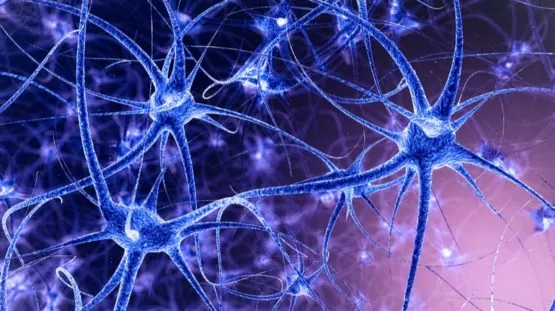Scientists have successfully improved learning and memory, as well as neuronal morphology, in Alzheimer’s-prone mice with the help of a gene therapy that upregulates a vital protein [1].
Alzheimer’s disease (AD) has been a notoriously hard problem to crack, despite major R&D investment. AD has long been associated with the accumulation of amyloid-beta (Aß) plaques and tau-protein tangles in the brain, and most previous efforts were directed at removing those. This approach, unfortunately, resulted in some spectacular flops. Although research in this direction continues, scientists worldwide have been actively searching for alternative approaches. One of them postulates that even if we do not know how exactly AD causes our brain to falter, we could try to counter its effects by boosting the brain’s ability to function.
Cellular “life rafts”
Cellular membranes were thought to be homogenous, but a consensus is growing that membranes consist of various structurally different regions, such as membrane/lipid rafts (MLRs). MLRs are characterized by a high concentration of certain molecules, including cholesterol. This results in structural differences, compared to the surrounding membrane, that make MLRs appropriate for cellular signaling [2], which occurs when molecules from outside the cell attach themselves to receptors on the cell’s membrane and influence its behavior via complex chemical pathways. MLRs support these vital interactions through their unique structural properties.
In neurons, MLRs host most of the neurotrophin receptors. Neurotrophins, such as nerve growth factor (NGF), are a group of proteins indispensable for neuronal function [3]. AD patients are known to exhibit impaired neurotrophic signaling, especially in the cortex and the hippocampus [4]. This neurotrophin deficiency is thought to affect neuroplasticity – the natural ability of neurons to adapt to the changing environment.
Reinforcing cellular scaffolds
Caveolin-1 is a scaffolding protein, meaning that it helps maintain cellular structure – specifically, in MLRs – by binding other proteins together. Decreased expression of the Cav-1 gene is associated with learning and memory deficits in transgenic AD mice. Having chosen caveolin-1 as their target, the researchers attempted to upregulate it in hippocampal neurons using viral vectors.
Gene therapy with viral vectors is a rapidly developing and highly promising field, and several COVID-19 vaccines are built this way. The researchers used AAV (adeno-associated virus), a popular source for viral vectors that are thought to be completely harmless to humans [5]. Before the viral capsids are injected into the body, most of the viral genome gets replaced with other sequences, and this recombinant genome does not do much except for coding for the desired protein (caveolin-1, in this case). Contrary to wild AAVs, the recombinant virus does not have the ability to integrate itself into the human genome. Instead, its DNA forms circular plasmid-like fragments that reside in the nucleus. They persistently produce the protein and can even survive cellular division.
The caveolin-encoding gene was designed to be expressed only in the presence of synapsin – a protein that is present mostly, or exclusively, in neurons. This clever technique helps restrict protein production to a specific cell type.
Not just AD
Having selected their study and control groups, the researchers injected the viral vectors into the hippocampi of three-month-old mice. While the treatment began quite early in life, high levels of caveolin in the aged mice prove that the recombinant DNA continued to work during the whole lifespan. Thus, virus-based gene therapy can produce lasting effects even after a single treatment.
The tests were conducted at the ages of 9 and 11 months, when transgenic mice of this type already exhibit AD-like symptoms. The researchers showed that the treatment was able to significantly rescue learning and memory abilities that were impaired in the controls. On top of that, the treatment preserved MRLs morphology and several markers of normal neuronal function, such as synaptic structure and dendritic density. Interestingly, these beneficial outcomes were not due to reduced Aß and tau levels. As the researchers note, this means that the method they have developed may produce even better results in combination with treatments that target Aß and tau pathologies. Another takeaway is that caveolin therapy can probably be used to treat not just AD but also other forms of neurodegeneration of different or unknown etiology.
Conclusion
Although mouse AD models do not fully mimic human AD, as evidenced by the failure of multiple human trials after promising mouse trials, this study might be different, since it targets basic aspects of neuronal function and survivability. Gene therapy with viral vectors holds great promise, and every new success adds to our understanding of its immense potential – after all, downregulation of important genes is responsible for many diseases, including age-related ones. It seems that very soon, medicine will be able to complement natural protein production as it falters with age.
Literature
[1] Wang, S., Leem, J. S., Podvin, S., Hook, V., Kleschevnikov, N., Savchenko, P., … & Head, B. P. (2021). Synapsin-caveolin-1 gene therapy preserves neuronal and synaptic morphology and prevents neurodegeneration in a mouse model of AD. Molecular Therapy-Methods & Clinical Development, 21, 434-450.
[2] Alves, A., Dias, R. A., Kagami, L. P., das Neves, G. M., Torres, F. C., Eifler-Lima, V. L., … & Kawano, D. F. (2018). Beyond the. Current medicinal chemistry, 25(18), 2082-2104.
[3] Huang, E. J., & Reichardt, L. F. (2001). Neurotrophins: roles in neuronal development and function. Annual review of neuroscience, 24(1), 677-736.
[4] Yuan, D., Zeng, C., Chen, Q., Wang, F., Yuan, L., Zhu, Y., … & Chen, N. (2017). Root-Securing and Brain-Fortifying Liquid Upregulates Caveolin-1 in Cell Model with Alzheimer’s Disease through Inhibiting Tau Phosphorylation. Neurology research international, 2017.
[5] Wang, D., Tai, P. W., & Gao, G. (2019). Adeno-associated virus vector as a platform for gene therapy delivery. Nature reviews Drug discovery, 18(5), 358-378.



